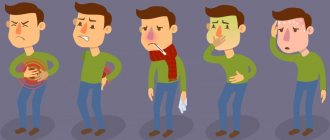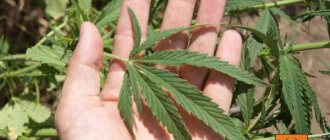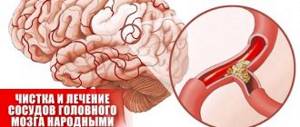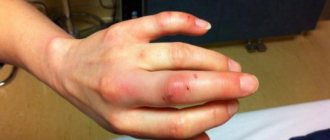The walls and floor are getting threateningly closer, the world has turned upside down and is spinning counterclockwise, and you are sitting in an ice-cold shower and, trying to drown out extraneous voices, quietly praying that it will let go as soon as possible. And it doesn’t matter what you decided to kill yourself with the day before - grass, paise and something heavier. At the party they promised that it would be fun, but now most of all I want to get rid of this nightmare as soon as possible. So what do you need to do to let go? We know the answer to this question and will try to give detailed recommendations.
What to do if you “hold” and won’t let go?
Unfortunately, too many people today know what to do if an alcohol overdose occurs. There are tips on how to alleviate the state of intoxication in literally every medical reference book. But with drugs the situation is somewhat more complicated. Today's variety of all kinds of smoking mixtures and pseudo-legal "recreational" means has led to the fact that there are almost three times more people who want to know what to do to be released than there are victims of alcohol-containing products. The main problem is not knowing how the body will react to soft drugs. And no one ever knows for sure what is contained in these products. Most often, Chinese “chemistry” is used. The main thing is that there is an effect, and many people begin to think too late about how long the substance will “hold.” For some, drugs barely affect them, and the body finds the strength to cope with the harmful effects. And for others, due to the lack of immunity, they provide long, painful torture with nightmares and delusional ideas. And this is not to mention the fact that a drug overdose can lead to nausea, vomiting, rapid heartbeat and, in some cases, death. Moreover, this happens not because the body could not cope, but because the victim of weed and other substances was unable to cope with the torment and decided to end the bad health with his life. To prevent this from happening, God forbid, you need to figure out and forever learn how to get rid of the influence of the most common types of drugs.
- What can I do to get relief from weed?
It doesn’t matter what it will be, hashish, “handbrake”, “red plasticine” and similar chemistry. The best remedy to relieve suffering is a mug of regular cow's milk. - What should I do to make it go away after the hair dryer?
After taking amphetamines, you can improve your well-being only by neutralizing their effects. A simple lemon will help you do this. You need to eat it whole and without sugar. - What needs to be done to let go after heroin?
It can hardly be classified as a soft drug, but if the high from this pleasure potion is too unbearable, then you need to purchase a drug called “Caffeine sodium benzoate” at the pharmacy. It should be injected intramuscularly. Although it is unlikely that those who are addicted to heroin will need to be taught how to use a syringe. - What does it take to let go after mushrooms, speed and other “wheels” related to ecstasy?
The body cleansing system is simple - a little salt water, a solution of potassium permanganate and two fingers in the mouth. After the “evil” comes out, you should take activated carbon. - What does it take to let go after psychedelics?
Like cures like. In order for schizophrenia or paranoia to leave the inflamed brain forever, it must be fought with the same means that are used in psychiatric clinics. The safest drugs are antipsychotic tablets and Risperidone.
Psychotropic substance with a banal “Biography” for a drug
It turns out that the spread of many addictive substances is facilitated by...doctors!
Tobacco was actively distributed by doctors of the New Time as a remedy for stress. Today, increasingly strict anti-tobacco laws are being developed to combat the endemic tobacco epidemic.
Methadone was given by prescription to Americans suffering from heroin addiction. Today this substance is recognized as the worst drug.
The chemical formula of LSD would have been gathering dust on a shelf as useless if its creator, pharmacist Albert Hofmann, had not accidentally inhaled the powder he synthesized.
It's a similar story with amphetamine. It was synthesized back in 1887 by the Romanian chemist Lazar Edeleano in one of the German laboratories. Until 1920, this strange substance did not attract attention at all. Then they tried to use it against asthma, but it was unsuccessful. And only in 1937 did the mass production of tablets begin as a medicine (!) for narcolepsy and other conditions accompanied by lethargy and drowsiness. Uncontrolled treatment with amphetamine gave results immediately: already at that time the first addicted people appeared. But no one was in a hurry to sound the alarm yet.
During World War II, amphetamine tablets became the American and British equivalent of “front-line hundred grams.” In the post-war years, production of the drug continued to increase. In 1962, as many as 80,000 tons of powder were produced. Of the hundred Americans who came to the pharmacy, three presented the pharmacists with prescriptions containing amphetamine.
And then, in the 60s of the last century, “thunder struck.” It became clear that amphetamine addiction was becoming an epidemic. In 1970, the release of the drug was sharply limited. World medicine has asked the question: how to get rid of amphetamine addiction?
Online distribution
There is even a meme on the Internet “how to please let me go.” This is the phrase that is most often typed in search engines such as Yandex, Google, etc.
In conclusion, it should be said that only an ambulance can provide qualified and effective assistance! If you feel unwell, you should consult a doctor as soon as possible; any delay can be dangerous! But the best cure for drugs is the word “NO”!
Be healthy and don't get into unpleasant situations.
- Author: Maria Sukhorukikh
Rate this article:
- 5
- 4
- 3
- 2
- 1
(0 votes, average: 0 out of 5)
Share with your friends!
Where does amphetamine addiction come from? How does it affect the body?
The drug amphetamine, when used correctly, is a medicine. When used in therapeutic dosages and in a certain regimen, it helps fight narcolepsy (excessive drowsiness), depressive disorders, the consequences of encephalitis (inflammation of the brain) and other diseases accompanied by pathological lethargy, slowing down of thought processes, and drowsiness.
Amphetamine is in the same group as caffeine - both substances stimulate the nervous system. And its chemical formula and mechanism of action are very similar to those of adrenaline, the stress hormone.
There are two analogues of adrenaline in the brain - dopamine and norepinephrine. They activate thought processes, tone the brain, and change the state of sleep to wakefulness.
Amphetamine acts in three ways:
- has the same activating effect as stress hormones;
- increases the production of dopamine and norepinephrine;
- inhibits the enzyme monoamine oxidase, which destroys dopamine and norepinephrine.
For amphetamine, the rate of effect is quite high. It helps to quickly activate a person, tone him up, and get him out of a sleepy state. The bronchi dilate, blood pressure rises, and heart contractions become more frequent and intensified. Everything is like after a mug of coffee, only much stronger. But that’s not exactly why amphetamine addicts use this drug...
Amphetamine addiction: what kind of drug intoxication is it?
Addicted people use amphetamine in the form of tablets (powder) for oral administration or injection.
The drug amphetamine has a two-stage effect.
The first stage is “arrival”
Stage two - euphoria
- An influx of energy: drug addicts often describe this with the phrase: “as if a wave is covering you.”
- Elevated mood.
- Thoughts become unusually clear.
- A surge of physical vigor.
- A person “comes to life”: he becomes excessively active and talkative.
- Excitement and hyperactivity: the patient is “on springs” and performs many actions.
- Irritability.
- Anxiety.
- Sometimes it’s aggression.
- A person cannot stop, he needs constant movement.
- Excessive sociability.
- Self-confidence.
- The patient inadequately assesses his capabilities and greatly overestimates them.
- Body tremors, sweating, high blood pressure, loss of appetite and insomnia, increased body temperature.
A characteristic sign of intoxication (stupefying) in amphetamine addiction is dilated pupils. It persists long after the patient has left the state of euphoria.
When using amphetamine, addiction develops relatively quickly. After just two weeks, the “high” no longer occurs—an increase in dose is required. After some time, the frequency of doses increases to several times a day.
The difference between synthetic salts and other drugs:
- A decrease in intelligence is formed (heroin does not affect mental abilities).
- Memory deteriorates.
- The drug addict relapses into childhood and becomes capricious.
- Women's menstrual cycle changes.
- Reproductive function in men is impaired.
- Immunity decreases (fungal stomatitis, acute respiratory infections are observed)
- More powerful action, but lethal outcomes are practically excluded
The mixtures act on receptors of the vegetative, immune and reproductive systems. There is a gross impairment of the intellect, in addition, the nervous system and psyche suffer. Addicts cannot concentrate, although they answer basic questions quite confidently. Parents and loved ones may not notice the disorder for a long time and only after the patient’s inappropriate actions do they turn to a narcologist for help.
Consequences of amphetamine use
We will divide the effects of taking amphetamine into the following groups:
- “withdrawal” after taking a dose;
- side effects of the drug;
- overdose;
- long-term consequences – psychosis.
Amphetamine withdrawal
As soon as a person emerges from the state of intoxication, amphetamine withdrawal immediately develops. Mood decreases and depression occurs. Sometimes the patient may want to take the second dose right away.
The most severe withdrawal symptoms are caused by “amphetamine marathons,” when the drug is taken in large quantities over a short period of time. For example, three days in a row.
But the withdrawal symptoms that develop after taking amphetamine cannot be compared in its strength and painfulness for the patient with the condition that doctors call withdrawal syndrome. In the language of drug addicts, this is amphetamine withdrawal.
This condition develops against the background of a sharp cessation of taking a psychostimulant. Amphetamine withdrawal is characterized by the following symptoms:
- fatigue, weakness, increased fatigue;
- excessive sleepiness during the day and insomnia at night;
- decreased blood pressure, asthenia;
- depression, ideas of self-blame, suicide attempts;
- some patients, on the contrary, become very irritable, aggressive, embittered, and often fall into hysterics.
Amphetamine withdrawal lasts on average about 2 – 3 weeks.
What are the side effects of amphetamine?
In addition to the development of addiction, there are other side effects of amphetamine:
- insomnia - because of this effect, phenamine is often called the “awakening amine”;
- anorexigenic effect: amphetamine suppresses appetite, while eating, a feeling of fullness occurs faster, so addicts lose weight;
- mental disorders: delusions, hallucinations;
- increased blood pressure;
- paradoxical effects: instead of feeling cheerful and elated, a person feels drowsiness and depression.
When using amphetamine for treatment, doses are adjusted to avoid side effects. And in a drug addict they inevitably develop.
Amphetamine: overdose
If we use precise medical concepts, then “coming” is already an overdose of amphetamine. Doctors call this condition amphetamine intoxication.
With a constant increase in dose, symptoms such as:
All this threatens the death of the patient. Immediate medical attention is needed. A dose of 25 mg per kilogram of body weight is considered lethal.
Amphetamine psychosis
Manifests itself in the form of delusions and hallucinations. They can be very different. Amphetamine psychosis often resembles schizophrenia. In such a state, the patient can do anything.
What does a person get from smoking weed?
The action will not begin immediately, although this also applies to individual parameters. For some, the arrival may begin in a few minutes, and for others in an hour.
Effect of smoking marijuana
- A drug addict's blood vessels dilate
- Heart beats faster
- Eyes become very red
- Blood pressure increases
- The person is in positive euphoria, but at the same time gets a feeling of relaxation. A drug addict wants to talk more, even if in ordinary life he is not particularly talkative and not so emotional.
- The person feels better, the addict is in a positive mood, he becomes cheerful, laughs a lot, and it seems as if the patient loves everyone in the world.
- He is good-natured and no longer aggressive.
- The addict wants to eat because his metabolism works faster.
- But it is worth knowing that a person may experience serious panic attacks while consuming grass.
Hairdryer withdrawal symptoms
Amphetamine is a psychostimulant and harms not only the physical condition, as happens with heroin addiction, but also weakens the nervous system. Under a hairdryer, sleep and appetite disappear, such an addict can drink water, smoke and talk for days, such are the characteristics of the hairdryer drug. Read more about amphetamine addiction on our website, but in this article we will only talk about the so-called withdrawal symptoms - withdrawal syndrome!
What can amphetamine withdrawal develop into?
Suicidal tendencies due to persecution mania
During severe highs, the drug addict is even ready to commit suicide, because he does not understand at all what is happening to him, and a new dose of amphetamine can cause cardiac arrest, since in order to come off the high, the dose is needed much more than before. Alcohol also does not help and drug addiction is usually not long-term; many cases of suicide and death due to negligence have been recorded. Less common, but also occurring, are cardiac arrests with hair dryer overdoses.
With short-term use, you need to try to fall asleep, at the initial stage you can do this on your own, but the further pheno drug addiction develops, the more difficult it becomes to cope with withdrawal symptoms.
Experienced hair dryer addicts become so accustomed to the change in their consciousness that they begin to eat and sleep despite the daily use of a hair dryer. There is nothing to be proud of here - this indicates severe poisoning of the body, and if with occasional use you can move away from the hairdryer with a regular dropper and get a good night's sleep, then in this state, comprehensive addiction treatment and a mandatory rehabilitation program are necessary to restore the mental state.
Hairdryer addicts are people whose degradation process has started and recovery for them is a very long and labor-intensive process. Getting rid of hair dryers is not a treatment; in this way we relieve symptoms, but do not treat.
Smoking weed is an addiction
Smoking hemp drugs can clearly be classified as a drug addiction. The disease drug addiction has several signs that marijuana addiction also has:
- Uncontrollable desire and strong psychological and physical attachment to drug use.
- The drug and its breakdown products clog the body, under the influence of constant intoxication, all internal organs are destroyed, and chronic concomitant diseases develop.
- Drug addiction destroys all areas of a person’s life: physical, emotional, social and spiritual.
- When a patient has developed a physical dependence, withdrawal symptoms occur when the drug is withdrawn.
Addiction caused by marijuana use also has all these signs. We invite you to learn more about the mechanism of its occurrence and its features.
How long does hashish leave the body?
Hashish is a narcotic substance obtained from the processing of cannabis. Its color, consistency and appearance depend on the raw materials used to create it and the geographical location of the plantations. This product is often confused with marijuana, but their effects on the body differ significantly. It is quite difficult to talk about how long hashish stays in the blood, since it is necessary to take into account factors such as: dosage, frequency of use and the period during which the person used the drug. In most cases, the reaction to the test will be positive within a few days.
Doctors who practice treatment of various types of addiction say that in order to stop using such drugs, you need a strong desire to quit drugs. Also, according to experts, the rehabilitation period depends on the amount of time needed to cleanse the body. Before using it, you need to take into account that no matter how easy the drug is considered, its entry into the body has catastrophic consequences.
Getting rid of addiction is extremely difficult; rehabilitation requires long-term treatment.
Cannabinoids have the property of being absorbed into the blood very quickly.
Formation of physical dependence
Any drug sooner or later causes physical dependence. Because a drug addict, under the influence of psychological attachment, begins to use it regularly. The rate of formation of stable physical cravings is primarily determined by the type of drug, as well as the mode of use and the psychophysical characteristics of the addicted person.
The fact that you have developed such an addiction will not be confused with anything, since now withdrawal from the psychoactive drug occurs. This phenomenon is called differently: drug withdrawal, withdrawal syndrome, withdrawal syndrome. The essence is always the same - the drug addict experiences pain and discomfort, his body cannot function normally without the active substances of the drug entering it.
The stronger the drug the patient uses, the faster withdrawal occurs, the more intense its manifestations.
Harm from consumption
Many who use “weed” and other hemp derivatives often underestimate the harm from their use. For young people, smoking drugs turns into an entertainment process, during which huge groups of young people indulge in fun.
But no matter how beautifully its distributors talk about this drug, you need to know about the possible consequences. Any of the narcotic drugs and psychotropic drugs leads to dependence on its use. The use of hashish causes enormous harm to internal organs. First of all, the vascular system suffers from the use of cannabis and its derivatives. This occurs as a result of the fact that cannabinoids contained in drugs have the ability to influence blood pressure.
Also, the main impact falls on the lungs. Resins and carcinogens formed as a result of burning “weed” lead to the appearance of cancer cells and inflammatory processes. In addition, reproductive function also suffers.
People who use hashish experience various mental disorders, expressed in attacks of panic, psychosis and paranoia. Systematic use causes personality degradation.
Even recreational drug use has a devastating impact on mental health.
90% of the time it takes to eliminate toxins depends on the individual characteristics of the body.
Marijuana
Marijuana is a drug that is produced from the Indian hemp plant. To prepare marijuana, all parts of the plant are used, they are dried, crushed and consumed through smoking.
This drug has long been widespread in our country. There are favorable conditions for the growth of hemp in the south of Russia and the CIS. In our country, marijuana is a prohibited illegal drug, although it is popularly considered a light drug. This is a non-medical concept; narcologists do not divide drugs into light and hard, but talk about the characteristics of a particular addiction. And the seemingly harmless addiction to grass also has its own, completely harmless nuances.
How long does hashish stay in the body?
Very often on medical forums devoted to this topic, you can see the question, how long does hashish leave the body? In fact, it is almost impossible to answer this question unambiguously. It is necessary to analyze each case separately and take into account factors such as health status and the presence of chronic diseases.
It can also be said that the approximate time frame for the elimination of all components of the drug takes time equal to the time period of its use. It follows from this that if a person has used hashish for five years, then it will take the same amount to completely remove it from the body. In particular cases, traces of drug use can be detected decades after their use has ceased.
In order to speed up the process of cleansing the body, you can contact a specialized clinic. Experienced medical specialists are able to significantly speed up the process of removing harmful substances using special techniques and medications.
The rate of elimination of hashish from the body is also affected by the geographical location of the plantations. For example, substances manufactured in India have a huge percentage of THC, which significantly increases the purification time. Hashish produced in South America is eliminated from the body much faster and this period is about five days.
Only knowing such nuances can we talk about the timing of withdrawal. In addition, it is necessary to take into account some physiological characteristics. These features include the following factors:
- age, weight and height of the patient;
- general health;
- presence of chronic diseases;
- the presence of pathologies of internal organs;
- duration of use and quantity;
- metabolic rate;
- the group to which the drug belongs.
The method of analyzing the content of narcotic substances in the body also plays a significant role. For example, a chemical analysis can show the presence of narcotic substances for three months after the last use. When collecting blood and urine tests, the presence of products formed as a result of the breakdown of narcotic substances can be detected even two months after the last use.
There are other narrowly focused tests that can determine the content of such substances in the body, even a year after its use. Very often, hair follicle analysis is used for this. They store information about all the toxins that have entered the body over the past few years.
Taking certain medications regularly over a long period of time can also increase the time it takes to eliminate toxins by up to a year or more.
Treatment for hashish addiction
Treatment for hashish addiction is possible. It takes place in our drug rehabilitation Center for Healthy Youth. Our branches are located throughout Russia, so you can easily contact our organization in any city in the country. Treatment for hashish addiction takes place in our clinic in stages and begins with complete detoxification; it is almost impossible to find traces of the drug after completely cleansing the body of toxins.
Next, the physical health of the addict is restored, the functioning of the internal organs, brain, and psychological state is normalized. After which comes the most important stage - comprehensive psychosocial rehabilitation. Only after completing all stages of therapy can you get rid of your addiction and craving for drugs forever.
In which organs does hashish accumulate?
No expert can answer how long it takes for hashish to disappear. The fact is that THC, as a result of consuming hashish, spreads throughout the body and settles on all internal organs. Substances formed as a result of decay can be found in the following organs:
- lungs;
- vascular system and heart muscle;
- reproductive organs;
- liver;
- cells and fat deposits.
The process of finding harmful substances takes a fairly short period of time. The half-life of toxic substances is observed on the fourth day after consumption. The complete disintegration of all harmful substances can take a period of thirty days. However, this only happens in case of one-time use. Almost all internal organs participate in the excretion processes.
The first stage occurs due to the absorption of the substance by the circulatory system. Blood circulating throughout the body brings these products to the kidneys, where the purification process takes place. That is why it is difficult to compare even the approximate length of time that hashish stays in the body. Each organism is individual and the processes occurring inside the human body take different periods of time.
The main component of hashish, tetrahydrocannabinol, leaves the body over a very long period of time. It is the presence of this element that tests are aimed at, the purpose of which is to identify the fact of drug use. The amount of this element in the body can tell how long ago a person used the drug.
Why is salt dangerous?
At the moment, salt is the most dangerous drug. Its use causes the active production of joy hormones, which leads to a euphoric state. Getting used to this drug occurs almost immediately. The popularity of salt is also due to its low cost and availability. Almost anyone with a smartphone and Internet access can purchase this drug on the Internet. Salt is popular for another reason. It can be consumed in all known ways. It can be snorted, smoked, swallowed, or injected intravenously.
How to speed up the elimination of THC
Cannabinoid is a substance that spreads throughout the body quite easily. Accumulating in tissues, it causes damage to the body for a long time. How to remove hashish from the body quickly is a rather pressing question. In fact, there is simply no special technique to speed up the process. In most cases, experts recommend taking care of your own metabolism.
Quitting drug use, a proper daily routine, active exercise and proper nutrition may well lead to the fact that the time it takes to remove harmful substances from the body will be significantly reduced.
In order to speed up this process, less effective methods can be used. Visiting saunas and baths, using diuretic teas and medications also help the body eliminate toxins. However, under the influence of harmful substances, the immune system is significantly reduced. As a result, the use of such measures can greatly affect the health of the heart and liver.
The use of any narcotic products based on both plant and chemical components leads to addiction, and as it develops, it causes enormous harm to the health of internal organs. In addition, mental disorders begin to develop. It is necessary to be aware of all the consequences of drug use, only then there is a chance for successful treatment.
Alcohol
There are several good, proven folk remedies to combat alcohol intoxication.
- Ammonia. Ammonia is used not only for muslin young ladies who constantly lose consciousness. In general, it helps to clear the brain and put it in a fighting state. If a standard cotton swab with alcohol does not produce much effect, then you should dilute a few drops of ammonia in half a glass of water and drink in one gulp.
- Ears. Few people know that vigorously rubbing your ears can achieve a sobering effect. This procedure causes blood to circulate faster throughout the body, driving clean, non-alcohol-poisoned blood to the brain.
- Water. Drinking plenty of fluids can help very effectively. Water cleanses the stomach and helps remove toxins from the body.
Withdrawal syndrome when using hashish
Withdrawal after withdrawal from hashish lasts from 3 days to 1 month. The first 7 days are considered difficult. Then the symptoms begin to subside. The addict still feels the urge to smoke weed, but his sleep patterns are already restored and his appetite returns to normal.
Tetrahydrocannabinol (the active substance in hashish) can remain in adipose tissue for up to 60 days. Usually, the elimination of the toxin is very long, which is what accounts for such a long period of withdrawal.
There are a number of signs of withdrawal syndrome:
- Sleep disturbance.
- Depression.
- Nightmares.
- Dreams where the addict uses hashish.
- Problems concentrating.
- Irritability.
- Aggression.
A painful state between apathy and agitation is characteristic of the abstinence period.
How long do salt addicts live?
Amphetamine addicts experience a severe hangover after the drug wears off. It manifests itself especially clearly after so-called “marathons”, when drug use lasted for several days in a row.
In addition to the fact that they feel physically ill, their nervousness simply goes through the roof and they begin to lash out at those who come into contact with them.
But, in order not to arouse suspicion, they attribute their inadequate reactions to other circumstances. Let's look at the most typical "excuses" of amphetamine addicts.
As a rule, salt addicts are not able to cure themselves, and treatment at home can lead to even worse consequences. What is needed here is a system that is built by doctors: for starters, detoxification of the body, continuous work of psychologists and psychiatrists, and with the whole family, otherwise breakdowns may occur and the victim cannot be helped. The only thing loved ones can do is to help the addict realize that there is a problem and begin treatment.
It is very difficult to give a favorable prognosis to such a patient, because every moment is important:
- time of taking the drug (for how long);
- age of the salt addict;
- health status before starting to take “salt”.
If nothing is done, then the answer to the question of how long “salt” drug addicts live will be obvious. Their life is a constant torment with outbursts of aggression, nervous breakdowns and a constant desire to take drugs. A destroyed immune system makes the body vulnerable to disease, and the brain is also destroyed. This never goes away without a trace, even in the case of successful rehabilitation.
Remember, it only takes a few months to turn into a feeble-minded invalid and die.
How can you find out where and how a drug addict buys salt?
Most often, drugs are purchased via the Internet. When asked in a search engine, the addresses of sites and forums where the order occurs are returned. Payment also takes place through Internet banking or terminals, after which the drug addict receives an address where he can pick up what he ordered. This can be understood by the terminology - “find a treasure”, “pick up a bookmark”.
You can also get drugs through contacts on forums or social networks. In some cases, data is even written on the walls of houses and fences in the form of graffiti. Drugs are disguised with the names “Mix9raquo;, “Legal9raquo; and other others. As a contact, “ICQ9raquo;” is most often offered, less often a telephone number.
What affects germination
There are a huge number of factors that influence when your lawn will emerge. If you study these reasons in advance and properly care for your plantings, you will be able to achieve timely and uniform germination. Try to monitor the air and soil temperatures. You also need to regulate the degree of lighting and watering so that the lawn grass does not die. It is equally important to use a high-quality herbal mixture.
Did you know? Archaeologists have discovered an ancient manuscript dating from the 14th–16th centuries. BC e. It had a picture of a lawn.
Temperature
To provoke high-quality and timely germination of the seed, you will need to adjust the temperature. You need to consider what types of plants you use. Some of them cannot tolerate drought and high temperatures. For others, on the contrary, dry weather will promote development. When growing the Moorish species, gardeners must adjust the temperature so that it is in the range from +25 to +30°C. If you live in a region where hot weather prevails, you will need to increase the amount of watering.
If you have planted a sports lawn consisting of red fescue, then the temperature should be between +20 and +35°C.
The optimal temperature range is from +22 to +35°C, typical for the following types of lawn:
- urban;
- ground floor;
- roll
Did you know? The lawn cutting machine was invented by Edwin Budding. In 1830 he filed a patent for it.
Lighting
All types of lawn grass need adequate sunlight. Therefore, it is recommended to plant on the south side of the site. If shadow falls on the green carpet, then seedlings will not appear in these places, and voids will form. If you plant a grass mixture in regions with a cool climate where the days are short, the lawn will grow slowly. The buds are formed only after 3–4 weeks.
Watering
All types of lawns need plenty of moisture. Therefore, it is recommended to water them every day. It is better to use a drip irrigation system so that the water is distributed evenly over the entire area. The soil should be moistened to a depth of 20–30 cm. If this condition is not met, the lawn will grow slowly. In this case, the seed germinates only after a month.
Quality of herbal mixture
The ability of a lawn to grow in a short time is also affected by the quality of the grass mixture. It is better to buy ready-made seeds in specialized stores. If you decide to collect seed yourself, it is better to do it from high-quality plants. Make sure they are not sick or old.
How to recover from salts
After consumption, a person feels very tired, very thirsty, lacks appetite, insomnia occurs, panic attacks, hallucinations, persecution mania, and psychosis are possible.
Mephedrone is known for its ability to cause a strong desire to repeat the dose. When the main effects of a substance begin to subside, a person is irresistibly drawn to take it again. This designer drug, if used repeatedly, can lead to a significant disruption of the process of serotonin metabolism in the nervous system - serotonin syndrome, which manifests itself in disruption of the sleep-wake cycle, emotions, thermoregulation, muscle contractions, gastrointestinal motility, etc. In severe form, serotonin intoxication is life-threatening.
The consequences of mephedrone include the destruction of physical health and severe psychological dependence, which causes an irresistible craving for the drug, aggressive behavior, anxiety, depression, and mental disorders.
Psychological addiction can appear after the first use of this drug.
As for physical addiction, according to doctors, it has the potential to develop in the future against the background of various manifestations of mental disorders. The use of salt can lead to death: deaths associated with its use have been registered both in Russia and abroad.
To effectively recover from salts, you must go through the following steps:
- Detoxification. Salt is very poorly removed from the body. To speed up this process, you will need to cleanse the blood with plasmapheresis or hemodialysis. General strengthening procedures, for example, a glucose drip, will also not interfere.
- Rehabilitation. At this stage, it is important to understand the reasons why a person started consuming salt. The goal of rehabilitation is to eliminate psychological dependence and create a model of life in which the use of salts will lose its meaning.
- Social adaptation. Return to normal functioning of the individual in society. Including returning to work.
It is possible to recover from salts; a necessary condition for this is the presence of desire and the help of specialists.










